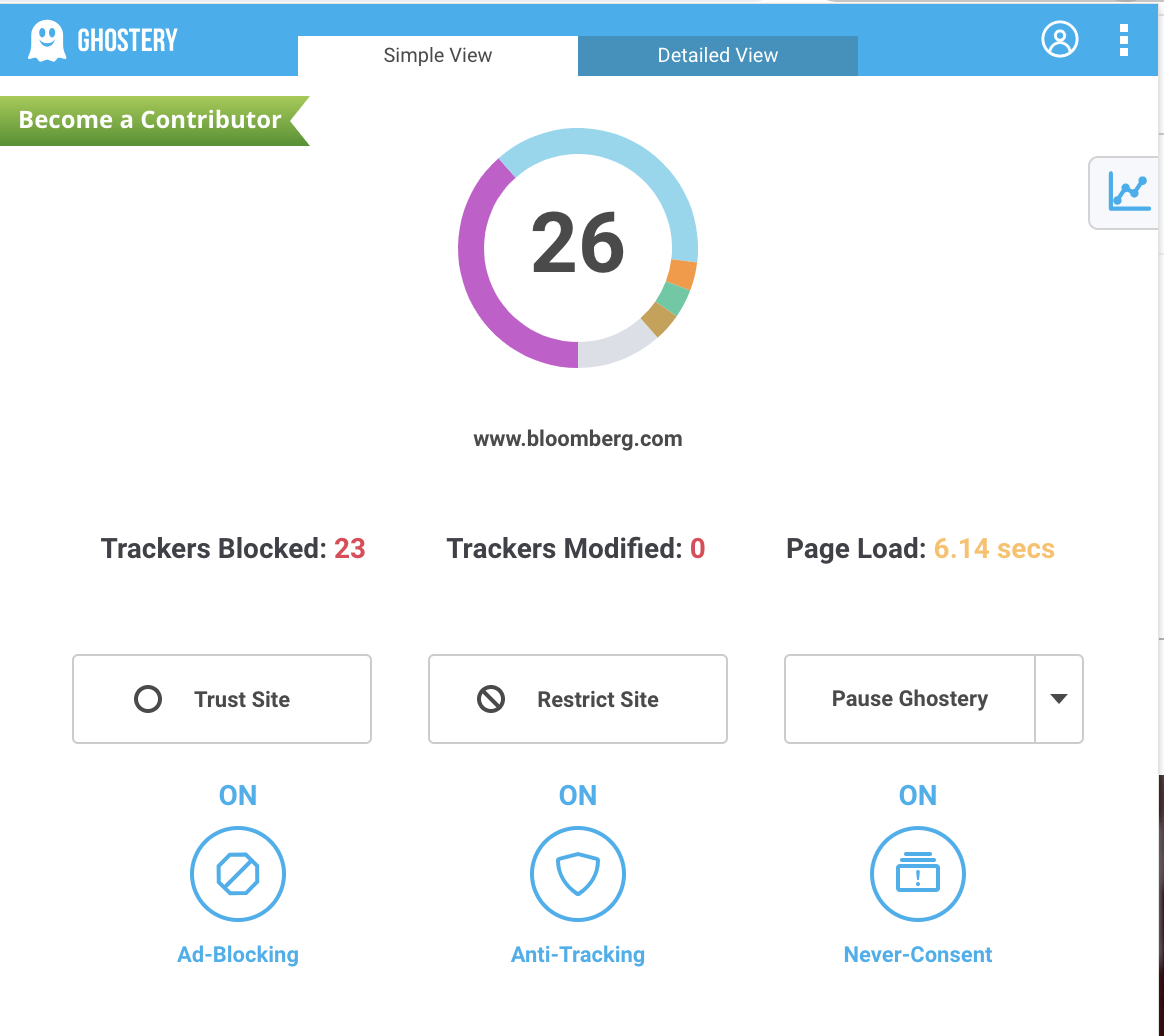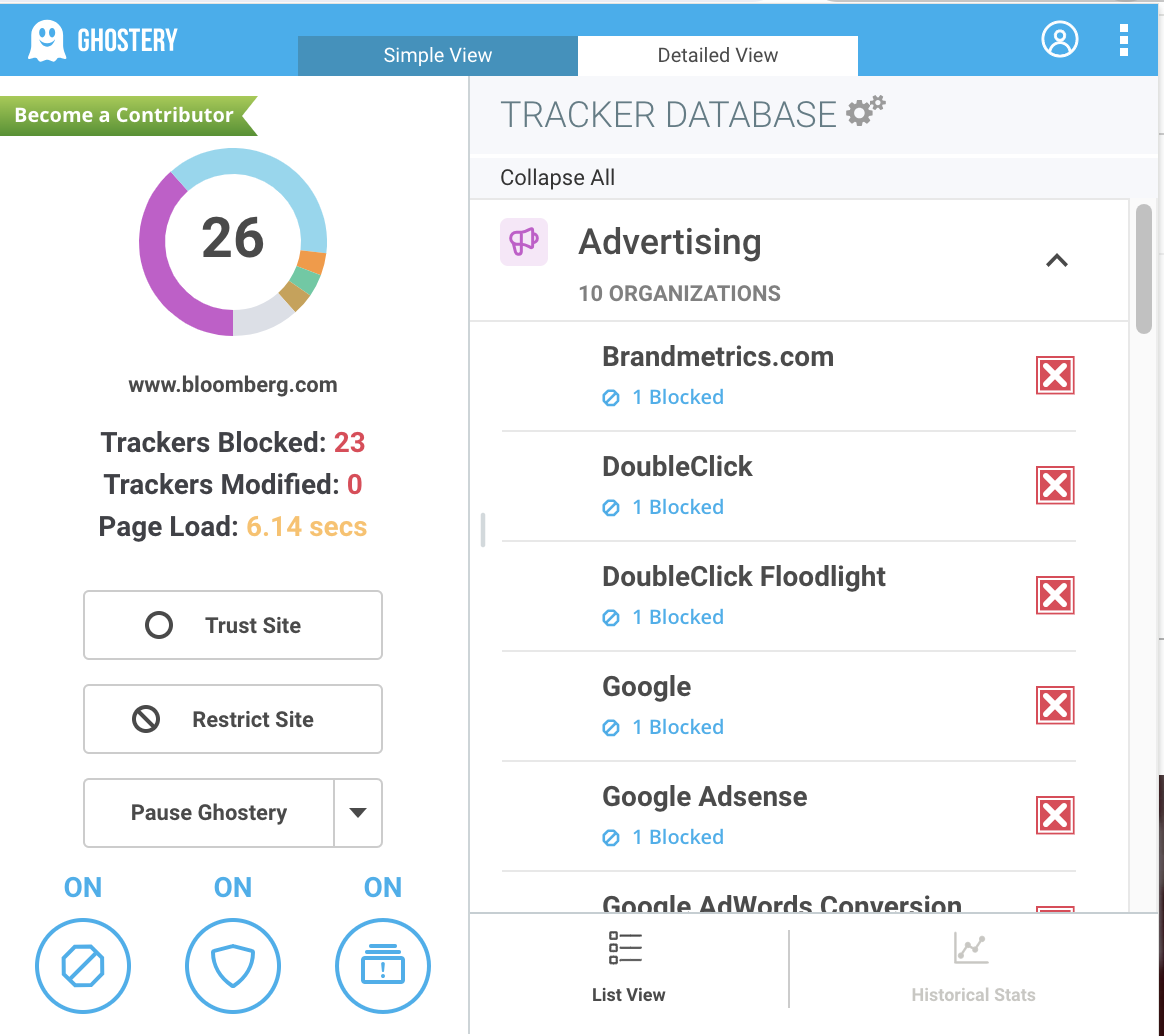Many people complain about ads ruining their browser experience, and they’re right. Websites increasingly rely on advertisements for revenue, and this reliance has caused many to focus on ads over content. Some websites are so filled with ads than content that they might qualify as adware.
However, there’s a solution to the problem of excessive ads. You can install an ad-blocking tool to detect and restrict ads from their roots, enabling you to enjoy your browsing experience. Ghostery is one of the best ad-blocking tools and is famous for being free and open-source.
We’re reviewing Ghostery to help you decide whether it’s worth using. This review will explore its features, pricing, user experience, customer support, and other vital aspects. After reading it, you can decide whether to use Ghostery or an alternative tool.
Ghostery: Plans and Pricing
As mentioned, Ghostery is a free tool you don’t have to pay for. You can download the extension or mobile app anytime without paying anything. Ghostery is an open-source tool maintained by a team of volunteer developers and operated by Cliqz, a privacy-focused browser. Cliqz takes care of Ghostery’s hosting costs as part of goodwill and marketing efforts to promote its privacy-based tools.
However, Ghostery offers optional “contributor” plans ranging from $1.99 to $11.99 monthly to appreciate the developers. The Contributor plans give you access to complementary features like custom teams, historical tracker analysis, and priority customer support. The core ad-blocking tool is not restricted to any plan– you can enjoy it for free.

Ghostery: Features
Ghostery is an excellent tool for blocking ads and improving your browsing experience. The free plan includes the ad and tracker blocker, whitelisting/blacklisting, and a never-consent feature that removes those annoying popups that always ask for cookie consent.
Ghostery blocks HTTP requests from third-party tracking scripts, preventing these scripts from monitoring your browser behavior and serving ads. The company maintains a vast “script library” containing script-serving domains, and this database is continuously updated with new scripts. Any domain in this library is automatically blocked so that it can’t serve ads on your browsers.
Ghostery’s script library is community-driven, so anyone can find and submit a tracker, making it easier to add trackers that Ghostery might have missed. Ghostery shows an “ad blocks counter” detailing the number of ads blocked on every web page you visit. You can monitor this data to verify that the software is working effectively.
You may have sites that you trust to show you ads. For example, you like a particular blog and want to support it by allowing its ads to show on your browser. In that case, Ghostery lets you whitelist or blacklist specific sites. When you whitelist a site, the ads on that site will show on your browser, while those on other sites remain blocked. Similarly, blacklisting a website removes all ads from that site.
The European Union passed the General Data Protection Regulation (GDPR) in 2018, requiring websites to get explicit consent from users before installing cookies and trackers on their browsers. Ever since, the web has been inundated with constant popups asking for cookie and tracker consent.
Ghostery offers a simple feature to avoid this annoyance. It gives an automatic never-consent response, and you won’t see such popups appearing again while you browse.
Ghostery offers complementary features to users who choose to be contributors. Such users can see historical tracker stats, compared to free users who see tracker stats only for their current web page. They can see the number of trackers blocked daily, monthly, or for any custom period. Users also get advanced details on the types of trackers and how frequently they appear.
Ghostery provides priority support for Contributors, ensuring they get timely responses to their queries. Likewise, Contributors can use custom color themes to personalize their Ghostery dashboard.

Ghostery: Interface and In-Use
Ghostery has an intuitive interface that’s easy to navigate. You can download it as an extension or download the iOS app. Unfortunately, Ghostery doesn’t have an Android app; it only has an extension that works on the Firefox browser for Android phones.
Ghostery has a minimal and uncluttered interface with good color contrast. Features are neatly arranged on the dashboard, allowing you to turn the ad blocker on/off and blacklist or whitelist sites seamlessly.
You can switch between a Simple and Detailed view to monitor the trackers Ghostery has detected and blocked on your browser.
If user interface were the only criterion for this review, Ghostery would get a perfect score.
Ghostery: Customer Support
Don’t expect much support from Ghostery if you’re a free user. You can contact the company’s support team via its web form. However, Ghostery gives priority support to contributors and not free users. It’s advisable to review the FAQs section before submitting a support ticket.
Ghostery: The Competition
Ghostery has many competitors in the ad-blocking space. Two rivals we’d like to highlight are Privacy Badger and Wipr.
Privacy Badger is a free browser extension for Chrome, Firefox, Edge, and Opera. Like Ghostery, it blocks ads and tracking scripts effectively to improve your browsing experience. However, unlike Ghostery, it doesn’t have a mobile app.
Wipr is an effective ad-blocker for iOS and macOS users, with a very intuitive interface. It’s not free like Ghostery, but it costs very little: a $1.99 one-time fee.
Ghostery: Final Verdict
Ghostery is an excellent free ad blocker that effectively blocks trackers and gives you details to confirm what has been blocked. You can use it as a browser extension or mobile app, although not for Android, to improve your browsing experience. The main drawback we observed is the limited customer support, but that’s understandable for a free tool.

